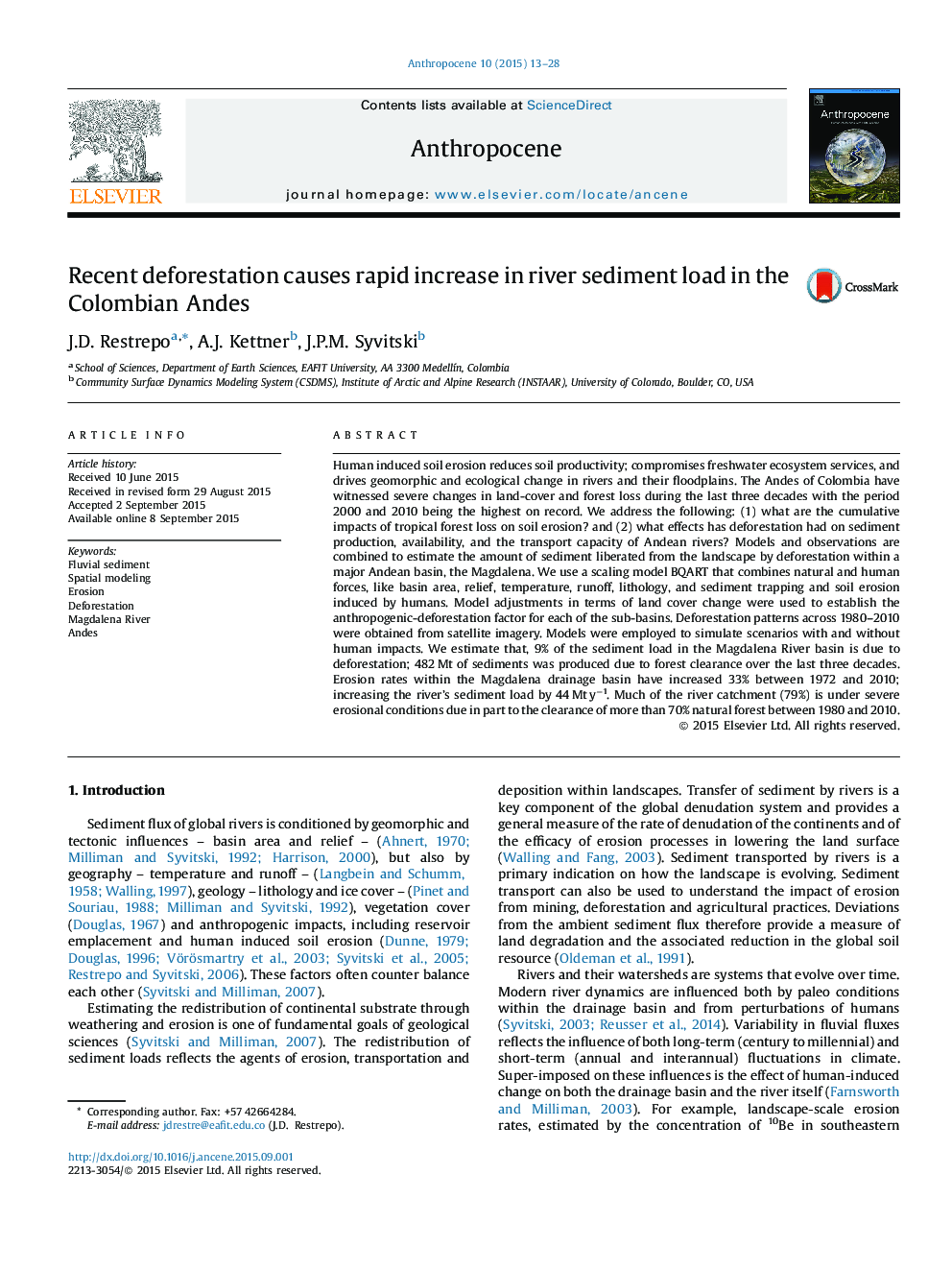| Article ID | Journal | Published Year | Pages | File Type |
|---|---|---|---|---|
| 4461858 | Anthropocene | 2015 | 16 Pages |
•We estimate the amount of sediment liberated by deforestation within a major Andean basin.•Model adjustments were used to establish the anthropogenic-deforestation factor.•9% of the sediment load in the Magdalena River basin is due to deforestation.•482 Mt of sediments was produced due to forest clearance over the last three decades.•Erosion within the Magdalena basin has increased 33% between 1972 and 2010.
Human induced soil erosion reduces soil productivity; compromises freshwater ecosystem services, and drives geomorphic and ecological change in rivers and their floodplains. The Andes of Colombia have witnessed severe changes in land-cover and forest loss during the last three decades with the period 2000 and 2010 being the highest on record. We address the following: (1) what are the cumulative impacts of tropical forest loss on soil erosion? and (2) what effects has deforestation had on sediment production, availability, and the transport capacity of Andean rivers? Models and observations are combined to estimate the amount of sediment liberated from the landscape by deforestation within a major Andean basin, the Magdalena. We use a scaling model BQART that combines natural and human forces, like basin area, relief, temperature, runoff, lithology, and sediment trapping and soil erosion induced by humans. Model adjustments in terms of land cover change were used to establish the anthropogenic-deforestation factor for each of the sub-basins. Deforestation patterns across 1980–2010 were obtained from satellite imagery. Models were employed to simulate scenarios with and without human impacts. We estimate that, 9% of the sediment load in the Magdalena River basin is due to deforestation; 482 Mt of sediments was produced due to forest clearance over the last three decades. Erosion rates within the Magdalena drainage basin have increased 33% between 1972 and 2010; increasing the river’s sediment load by 44 Mt y−1. Much of the river catchment (79%) is under severe erosional conditions due in part to the clearance of more than 70% natural forest between 1980 and 2010.
